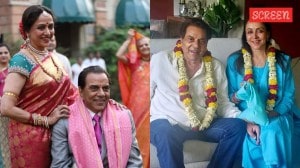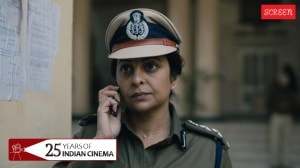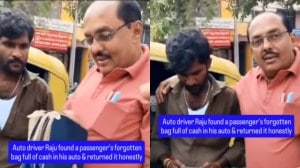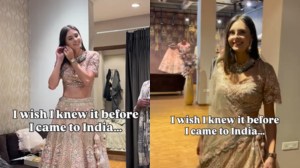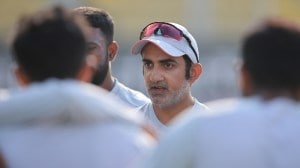‘I want to ensure that art is accessible for everyone, not just a privileged few’: Emma Sumner
Emma Sumner, director of Public Arts Trust of India, talks about the curatorial and strategic vision for the ongoing Jodhpur Arts Week and expanding access to the arts
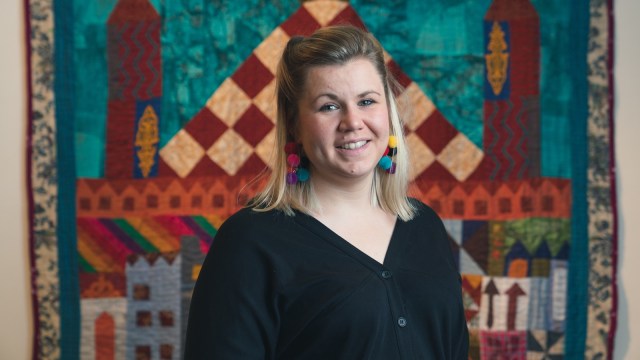 Emma Sumner
Emma SumnerThe Jodhpur Arts Week began in 2024 with a special edition. The theme of the ongoing edition is ‘Hath Ro Hunar’ (Skill of the Hand). If you could reflect on how the festival has evolved.
In 2023, I was invited by the Public Arts Trust of India’s founding chairwoman, Sana Rezwan, to join as director, and one of the tasks I was given was to launch Jodhpur Arts Week. Sana had a vision, which I have helped her to shape into a flat hierarchical platform that showcases contemporary art and design projects developed through a co-created model, which brings together international artists and designers with the local community. From school children to local vendors and overlooked makers and craftspersons from Jodhpur, each become involved in the making, design and development of the festival.
We launched Jodhpur Arts Week in 2024, with a Special Projects Edition. This was a test bed for Edition 1.0, exploring the learning exchange model that we had been developing as part of our artist residency programme, inviting international artists to come and co-create works. This included British artist Liz West, supported by British Council, who responded to the historical architecture of Toorji ka Jhalra with her site-specific work Tiered Reflections, Ujjwal Agarwal’s Timelines, which took over Ghanta Ghar (the Clocktower) with a sound responsive artwork that inspired children to interact, and exhibitions by the PATI x LAND Creative Arts Education programme, led by cohort of Teaching Fellows and LAND Director, Kriti Sood, to showcase the projects they had developed over the previous year.
Edition 1.0, ‘Hath Ro Hunar’, curated by Sakhshi Mahajan and Tapiwa Matsinde, builds on this, showcasing a number of newly commissioned site-specific works, which respond to Jodhpur’s public spaces, including works by Chila Kumari Singh Burman, Aphra Schemza, Ayesha Singh and Aku Zealing. Each has worked with local artisans and vendors to develop their commissions.
The festival encourages collaborations between local artisans and more mainstream artists. If you could possibly share with us the process of identifying these local artisans and how the collaborations establish themselves?
PATI’s team has been dedicated to discovering and understanding local artisans practices through their extensive research. We have a database of artisans and vendors which we share with all artists before their arrival to Jodhpur. To help facilitate active opportunities for learning exchange and to encourage community input, each artist in residence is encouraged to commit 20 per cent of their time to workshop programmes, talks and other activities, for the general public and to engage with the PATI x LAND Creative Arts Education programme, introducing their work to the people of Jodhpur.
Not every artisan has immediately been open to the idea of working with an artist or designer and that’s okay — part of the research is understanding who is happy to explore these opportunities, to ensure we give everyone the best experience. I have often found when working with communities that there will always be some people who will need to see what you are doing before they will commit to getting involved and that’s part of the process.
Strong examples emerging from this year’s co-created residency model include Puneet Kaushik’s Embodied, which brings together the work of numerous local artisans — Chaina Ram, a durry weaver, transforms vintage wedding sarees into vessels of women’s collective histories, preserving memory through craft; Nasir Mohammad and Sharif Mohammed’s tie-dye work explores the interplay of faith, freedom and relationships, while Yunus and Azruddin’s eco-friendly Chippa printing emphasises innovation and environmental consciousness. Mohan Lal Gujjar’s leather relief cut-outs evoke tactile storytelling, and Usta artisans’ gold embossing elevates tradition into enduring beauty and empowerment.
The Dhaqan Collective’s interactive sound-scape, Nomadic Echoes (supported by the British Council), celebrates resilience, interdependence and wisdom within nomadic communities, from the camel-herding Raika of Rajasthan to Somali nomads whose weaving songs carry generational knowledge. Designing a series of durries, they also worked with master weaver Chaina Ram in Salawas village, fabricated copper touch plates with Manish Soni in Jodhpur, and reimagined and redesigned an interactive sound-scape from Rajasthani women’s weaving songs and field recordings, drawing on folklorist Kuldeep Kothari’s archival work.
The PATI programming also focuses on democratisation of art, including workshops and discussions with school children. If you could tell us a bit about that, also highlighting some of the initiatives this year.
I’ve spent my career developing projects that open up opportunities for anyone to be creative and to express themselves, to ensure that art is for all. In my initial discussions with Sana Rezwan, it was clear that she had the same vision and this is why I joined the Public Arts Trust of India. Art has given me a lot over my career, and I want the work I do to ensure that art is accessible for everyone, not just a privileged few.
 Artist Chila Kumari Singh Burman’s Her Well Speaks / उणी बावड़ी बोलै
Artist Chila Kumari Singh Burman’s Her Well Speaks / उणी बावड़ी बोलै
To achieve this, at PATI, we include everyone in the process of developing festivals like Jodhpur Arts Week, to ensure the local community feels a sense of ownership over the final outcome, and what you see from this is a more diverse audiences, who have an understanding of the work, but also of what art is and what it is capable of doing to improve their lives and livelihoods.
Kriti Sood is actively developing a new creative arts curriculum in collaboration with school educators in government schools within Jodhpur’s walled city. This year-round programme is designed to support the well-being and outcomes of the learners, educators and the community. The programme is supported by a team of teaching fellows — all university students themselves — who each receive extensive training with opportunities to learn alongside local and global practitioners, including Dr Penny Hay, Shilpa Gupta and Emily Dowdeswell.
Additionally, another key initiative is PATI’s programme ambassadors, which we run during Jodhpur Arts Week and Jaipur Art Week, to nurture the future of the arts in Rajasthan by developing the skills and leadership of emerging creatives. The programme provides students with structured opportunities for professional growth through mentorship, hands-on experience and training. Ambassadors also play a key role in shaping the public experience during the Art Weeks —welcoming visitors, assisting artists and managing event logistics.
What have been the challenges and opportunities in bringing contemporary art to cities like Jodhpur and Jaipur?
Every city has the means to grow an arts festival, and for this reason, I don’t feel that there are challenges. It’s more about adapting and finding ways that you can utilise the existing resources within a city, rather than bringing in infrastructure from outside. Every art festival, be it in Jodhpur or any other city globally, has a responsibility to the city which hosts it, and the people who call that city home. If we don’t create employment for them, or find ways to encourage them to get involved, how will they ever feel welcome to join in and be part of the festival when it opens.
By finding local solutions we are able to include the communities of Jodhpur in the development of each of the site-specific works and the festival itself.
If you could tell us a bit about the response from the local residents. Has the feedback also helped shape the festival in any manner?
For PATI, it’s important that we get input and feedback from everyone who engages with our programmes. We do this through an evaluation process, inviting the audience to contribute their feedback through surveys. This data is then collated and used to shape our future programmes.
From the survey taken during Jodhpur Arts Week Special Projects Edition, we learned that for over 48 per cent of the audience attending, this was their first experience of contemporary art. A clear indication, that by using public facing venues and bringing art to them, we are engaging new audiences, who would not ordinarily have access. Listening to this, we have increased the number of public venues we are engaging with for Edition 1.0.
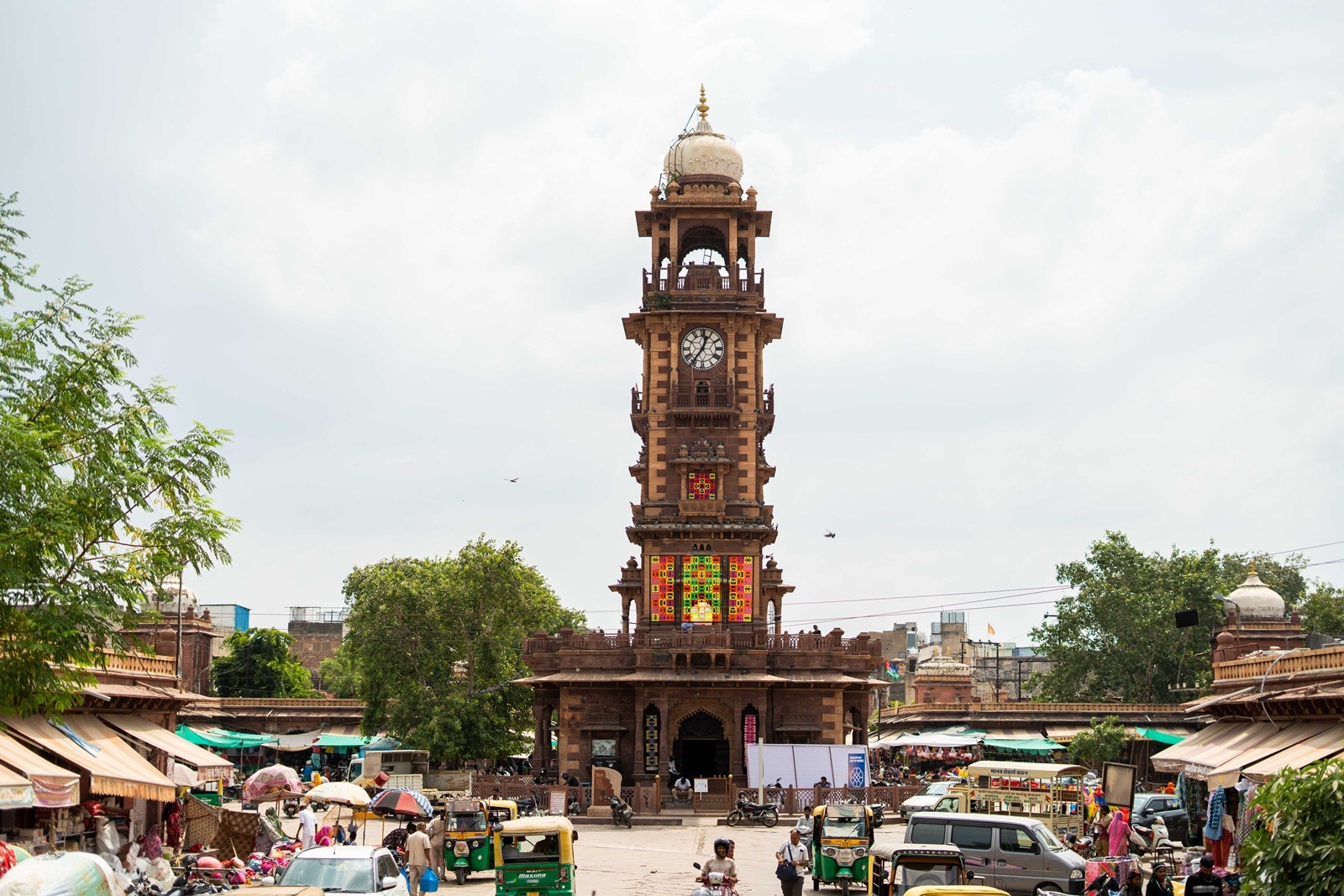 Aphra Shemza’s shemza.digital #17 at Ghanta Ghar/Clock Tower, Sardar Market, Jodhpur
Aphra Shemza’s shemza.digital #17 at Ghanta Ghar/Clock Tower, Sardar Market, Jodhpur
Several partner organisations we worked with during Jodhpur Arts Week Special Project Edition also expressed how their involvement in the event helped them to expand their work to new audiences and to increase the impact of their work within India.
I believe you are also a visual artist. If you could tell us a bit about your own work, also if it has been influenced by the engagements with the communities as festival director.
Yes, I originally trained as a visual artist, and although I don’t really practice any more, making is still central to my curatorial and arts management practice. Instead of making art myself, I now support others to have the opportunities to make and platform their work. All of the projects I have worked on have been co-created or community driven, working with artisans in marginalised communities, school, college and university students and the general public. I want to ensure everyone has the opportunity to be creative, regardless of their age or association. This has been my focus at PATI, but also across projects I have developed with other organisations internationally, including Tate. The experience I gained through my previous work has had a huge impact on the way that I have supported the development of the projects and platforms I have helped grow and create here at PATI.
- 01
- 02
- 03
- 04
- 05










